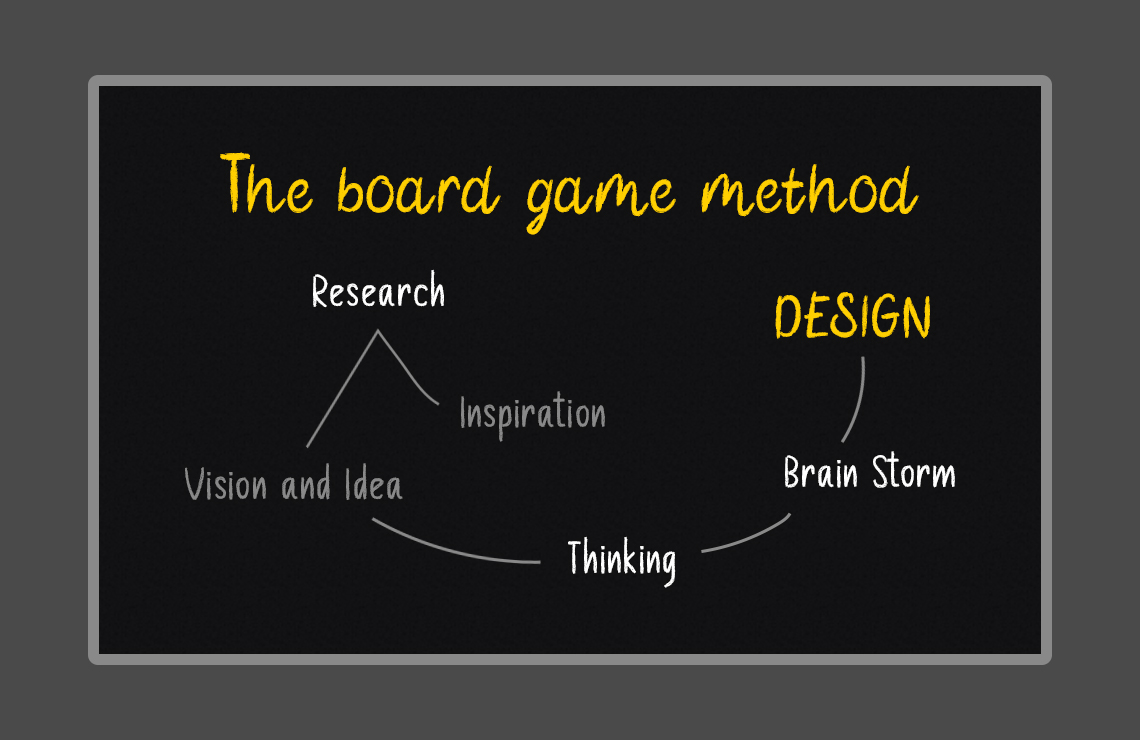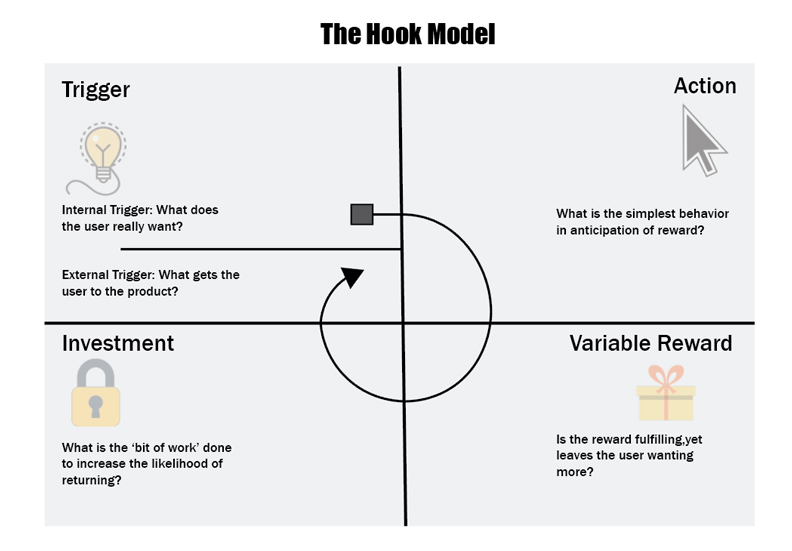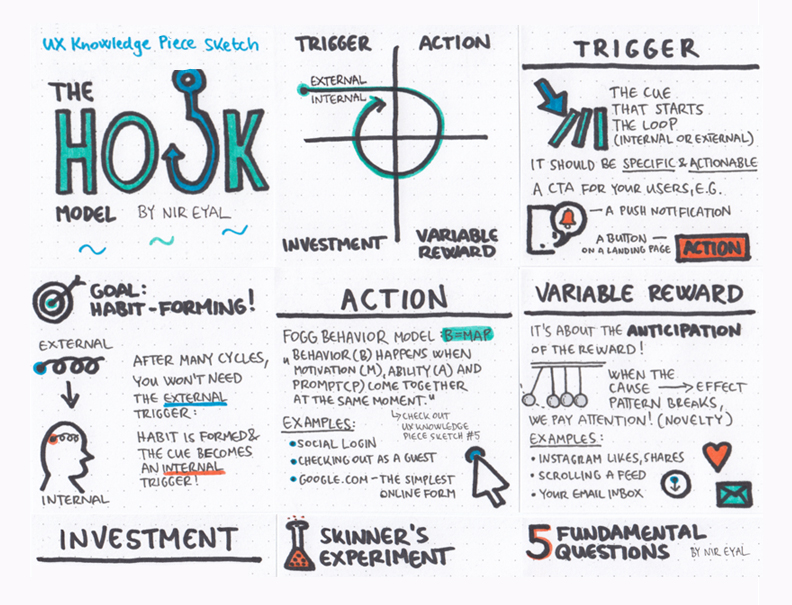
Create Habit-forming UX Designs
Are you hearing the term Hook model UX for the first time? Worry not for we have got you!
The hook model UX is extremely simple and no one can better explain it than Nir Eyal himself. Nir Eyal is an Israeli-born American author, lecturer, and investor who created this model to educate you on how not to depend on high-priced marketing campaigns.
He says: “Instead of relying on expensive marketing, habit-forming UX design companies link their services to the users’ daily routines and emotions.”
The hook model UX is one framework you should take into consideration. It is for anybody who is operating a startup or even thinking of running one in the future. The model is nothing else but a four-step process if rooted could encourage the best customer behavior.
The model is made for those who wish to build superior products for their customers. It is designed, defined, and refined for designers, product managers, founders, start-up founders, marketers, anyone who aims to comprehend how good products sway the behavior of people.
So, let’s talk about how this model can do wonders for you!
What is the Hook Model UX, and How Does it Work?
The Hook model UX is a thinking model that builds habit-forming products. It is divided into four phases, and those are named: Trigger, Action, Reward, and Investment.
The main thing is getting users hooked right, so this is how you do it!
Bad people…are in conflict with themselves; they desire one thing and will another, like the incontinent who chooses harmful pleasures instead of what they themselves believe to be good.
Aristotle, Nicomachean Ethics

Let’s discuss the system!
The Trigger
The trigger is the first phase in hook model UX for habit-forming UX design products. Here, there is a need. A need for some desire to be fulfilled. For instance, if you are tired you feel the need to sleep so, sleep is the trigger. Similarly, you can cause a trigger by careful analysis.
The trigger works according to the user’s emotion, and for this purpose, a designer has to know his user emotionally. You have to build an emotional connection with him. Therefore, UX is the base, and UI is a visual magnet for you.
User emotions vary as per the design so, try not to deliver him a bad visual, it triggers wrong emotions. In short, do the root cause analysis. Find any external or internal problems.
Here are a few useful triggers for both UI & UX:
UX Triggers
- Reciprocation (user gets useful things for free)
- Necessity and Salience (basic trigger, like a sales pitch)
- Novelty (new information or product)
- Curiosity (act)
- Social Proof (Test the quality of the product on social media)
- Team Appeal (Call like-minded team)
- Mass Appeal (Product is liked by majority)
- Argument (A precise explanation of product’s purpose)
- Scarcity (When the sale is ending tomorrow)
- Comparison (bad vs. good)
- UX Storytelling (a trigger that engages an action)
- Entertainment (the most effective Trigger, manifests recent trends)
- After opting for a trigger, it is easier to make efficient visualization for your target audience.
UI Triggers
- Motion (Dynamics like lines, color spots, scaling, rhythms, progress, etc.)
- Content text
- Color and lighting (brightness, saturation, color)
The Action
The goal of the trigger is to promise a reward, and demonstrate how to get it.
Let’s take the above example once again. When you’re tired, you feel the need to sleep. The action is ‘the sleep’ that you’ll get. But, this sleep takes a series of activities such as you to get freshened up, you make up your bed, some people even like to do low-impact stretching, listen to ASMR or other soothing music, or perform relaxing exercises. These activities are called ‘the user journey map.’
There may be varieties in their sleeping patterns but in the end, all they desire is a night of good sleep. Then there come insomniac people, they can’t sleep for an adequate amount of time. Its causes could be stress, anxiety, irregular sleeping schedules, depression, or many more. But, even they constantly look for ways to improve their sleep.
Being a designer you have to do the same, you have to keep doing user research to offer aesthetically pleasing user experiences. The hook model UX is exactly what you need.

The Reward
This is the major phase of the hook model UX that authorizes you to produce a yearning in the users. Instead of offering simple feedback to your users, you can give potential prizes to spark an interest. For example, Pinterest shows images that are only relevant and might catch their eye. The awards depend on the following factors during hook model UX:
- The personality of your users
- Expenses
- Investments
- Desires
- Values
- Preferences
- Objectives
- Tasks
Choose all or choose the best ones!
Investment
Let’s say your design was so amazing that the user actually spent some time on your website and ended up contacting you.
The Hook Model UX is an excellent way to start thinking about how you can bring users into your system and hook them well through triggers and rewards. At last, you will be able to build habits amongst them so they keep coming back for more.
Wrapping Up
When performing user research in the hook model, try to find out the reasoning, conducts, desires, customs, lifestyle, and problems and use those for habit-forming UX Design.
For instance, during the discovery phase, while you’re understanding the product needs of your users, think about everything we mentioned above. Use the hook method UX here and brainstorm strategies to offer rewards to gain investments.
This is exactly what we do at the mockup machine. Do you wish to know how we create habit-forming UX designs for our clients? Visit our helpline and talk to one of our BAs today.
